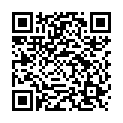|
|
|
| Module code: PIB-MA1 |
|
|
4V+2U (6 hours per week) |
|
7 |
| Semester: 1 |
| Mandatory course: yes |
Language of instruction:
German |
Assessment:
Written exam
[updated 19.02.2018]
|
KIB-MAT1 (P221-0001) Computer Science and Communication Systems, Bachelor, ASPO 01.10.2021
, semester 1, mandatory course
KIB-MAT1 (P221-0001) Computer Science and Communication Systems, Bachelor, ASPO 01.10.2022
, semester 1, mandatory course
PIB-MA1 (P221-0001) Applied Informatics, Bachelor, ASPO 01.10.2022
, semester 1, mandatory course
PIB-MA1 (P221-0001) Applied Informatics, Bachelor, SO 01.10.2026
, semester 1, mandatory course
PRI-MAT1 (P221-0001) Production Informatics, Bachelor, SO 01.10.2023
, semester 1, mandatory course
PRI-MAT1 (P221-0001) Production Informatics, Bachelor, SO 01.10.2026
, semester 1, mandatory course
|
90 class hours (= 67.5 clock hours) over a 15-week period.
The total student study time is 210 hours (equivalent to 7 ECTS credits).
There are therefore 142.5 hours available for class preparation and follow-up work and exam preparation.
|
Recommended prerequisites (modules):
None.
|
Recommended as prerequisite for:
PIB-DB Databases
PIB-INF2 Informatics 2
PIB-IREP2
PIB-MA3 Mathematics 3
PIB-RMA1
PIB-TI Theoretical Informatics
[updated 29.07.2024]
|
Module coordinator:
Prof. Dr. Peter Birkner |
Lecturer:
Prof. Dr. Peter Birkner (lecture)
[updated 04.07.2024]
|
Learning outcomes:
Students will learn basic mathematical concepts from the areas of predictive logic, sets and figures and
be able to use them confidently when formulating mathematical statements.
Students will be able to reproduce basic formulas from the field of combinatorics and use these to develop solutions
for combinatoric problems.
They will be capable of explaining the mathematical proof concepts of direct proof, indirect proof and complete induction and thus,
come up with new evidence.
They will be able to enumerate the axioms of the algebraic structures group, ring and field and
check the corresponding properties for structures with given operations.
Students will learn the terms and statements of group theory and be able to identify them in examples of groups,
such as (Z/mZ, +) and ((Z/pZ)\{0}, *).
They will be able to explain vector space axioms and demonstrate them in Euclidean space.
Students will be able to develop solutions in Euclidean space for geometrical problems using vector algebra, the dot product,
the vector product and the triple product.
They will be able to explain basic concepts of the theory of n-dimensional vector spaces.
They will have mastered elementary matrix calculation rules and determinant calculation rules and learn how linear images
can be represented and handled using matrices.
Students will be able to demonstrate how to solve a linear system and learn to master the Gauss algorithm
as a method for solving linear systems.
Finally, students will gain an insight into the manifold applications of mathematics in computer science (the development of programming languages,
program verification, digital technology, computing accuracy on computers, cryptography, computer graphics_).
[updated 19.02.2018]
|
Module content:
Basic mathematical terms
Propositional logic, first-order logic, sets, especially uncountably infinite sets
Relations, especially equivalence relations, partitions, functions
Algebraic structures
Semigroups, monoids
Groups, subgroups, normal subgroups, quotient groups, homomorphisms
Rings, fields, in particular Z/mZ
Natural numbers, mathematical induction, recursion
Peano axioms
Mathematical induction
Recursive definitions
Binominal coefficients and binomial formulae
Basic concepts of combinatorics (with quantitative considerations)
Elementary vector calculation in Euclidean space
Vector algebra, linear independence, dimension
Vectors in coordinate systems, dot product, vector product, triple product
Geometric applications
Vectors in n-dimensional space
Generating sets, basis, subspaces
Linear functions, image space, core
Representation of linear functions with matrices
Geometric applications: projections, reflections, rotations
Matrices and linear systems
Linear systems, Gaussian elimination
Square matrices, matrix inversion, determinants, Cramer´s rule
[updated 26.02.2018]
|
Teaching methods/Media:
Lecture. An exercise sheet will be distributed every week and then discussed in small groups the following week. In addition, a tutorial will be available for work in small groups. This is voluntary. In the tutorials, students will be able work on exercises themselves (with support from the tutor, if necessary) and ask questions about the lecture material. The tutorial can also be used to fill knowledge gaps.
[updated 26.02.2018]
|
Recommended or required reading:
- P. Hartmann, Mathematik für Informatiker (Vieweg); can be downloaded via OPAC as a PDF.
- M. Brill, Mathematik für Informatiker (Hanser).
[updated 26.02.2018]
|
Module offered in:
WS 2024/25,
WS 2023/24,
WS 2022/23,
WS 2021/22,
WS 2020/21,
...
|


